The AMD Radeon RX Vega 64 & RX Vega 56 Review: Vega Burning Bright
by Ryan Smith & Nate Oh on August 14, 2017 9:00 AM ESTAshes of the Singularity: Escalation
A veteran from our 2016 game list, Ashes of the Singularity: Escalation continues to be the DirectX 12 trailblazer, with developer Oxide Games tailoring and designing the Nitrous Engine around such low-level APIs. Ashes remains fresh for us in many ways: Escalation was released as a standalone expansion in November 2016 and was eventually merged into the base game in February 2017, while August 2017's v2.4 brought Vulkan support. Of all of the games in our benchmark suite, this is the game making the best use of DirectX 12’s various features, from asynchronous compute to multi-threaded work submission and high batch counts. While what we see can’t be extrapolated to all DirectX 12 games, it gives us a very interesting look at what we might expect in the future.
Settings and methodology remain identical from its usage in the 2016 GPU suite.
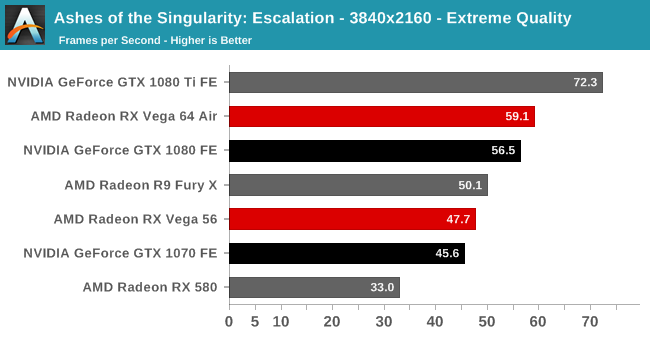
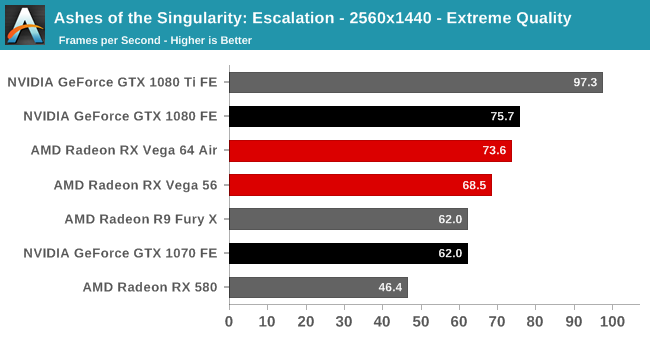
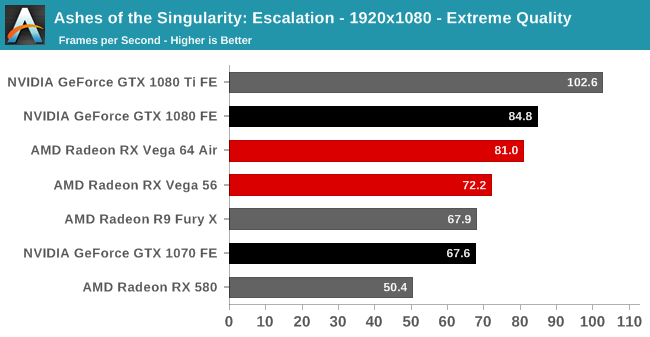
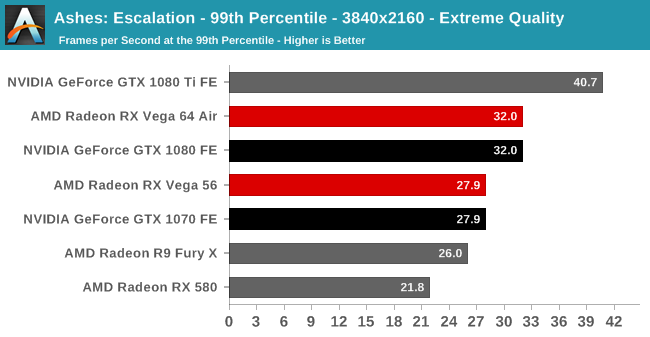
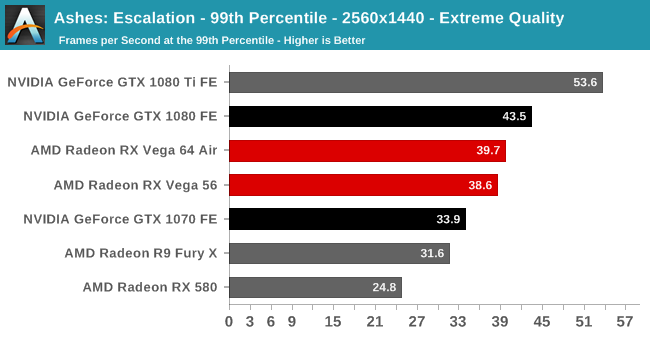
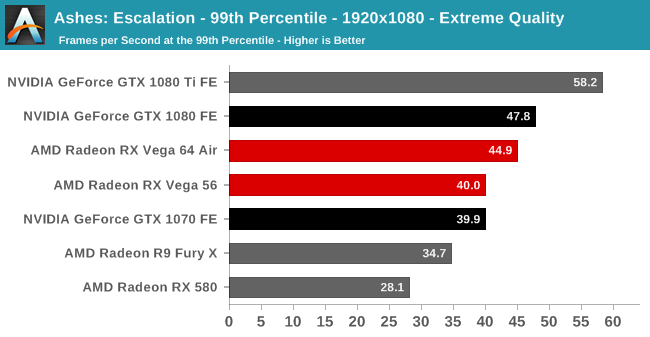










213 Comments
View All Comments
Oxford Guy - Monday, August 14, 2017 - link
This may be more of a shortcoming in the GloFo process than in the design of the chip. It would be very interesting to see how well it would do in PPW on TSMC's process.Exodite - Wednesday, August 16, 2017 - link
Of course, I were talking about the noise. :)The power consumption is, as I mentioned, a disappointment.
I'd be interested in seeing how the cards do with undervolting and other tweaks, the 480 actually gained performance in some situations due to the lower power draw resulting in more headroom.
Oxford Guy - Monday, August 14, 2017 - link
A vapor chamber is hardly "terrible" in terms of quality. But a high power draw + a blower = physics of noise.Oxford Guy - Monday, August 14, 2017 - link
Also, if one wants to talk about terrible stock cooling one should never forget the GTX 480.mapesdhs - Monday, August 14, 2017 - link
If one is in the UK, that would be a strange thing to do given it costs more than a 1080 Ti. It's priced 100 UKP higher than aftermarket 1080s with a 1759MHz base. Doesn't make sense. Factor in the power/noise, bit of a meh. If one is in the US where the price really is $500 (in the UK it's the equivalent of $750), well then maybe it's a bit more down to (irrational) brand loyalty, but still the power/noise issue doesn't make it an attractive buy IMO.The Vega56 looks far more interesting re price/performance and indeed performance, though it still has some power/noise issues. Perhaps aftermarket cooled versions will improve both cards, at least on the noise front.
mapesdhs - Monday, August 14, 2017 - link
Rats, that was supposed to be a reply to IchiOni. Why can't we edit??xfrgtr - Tuesday, August 15, 2017 - link
You'd have to be a hard core AMD fan to buy this over a GTX 1080Glock24 - Tuesday, August 15, 2017 - link
Also people that care about heat and noise care about power consumption.FourEyedGeek - Tuesday, August 22, 2017 - link
Only poor people buy AMD Vega 64, buy 1080 Ti for better performance.tipoo - Monday, August 14, 2017 - link
64 vs the 1080, yes.56 vs the 1070 is much more appealing, 100 dollars less for the same performance, plus a discount on Freesync monitors.